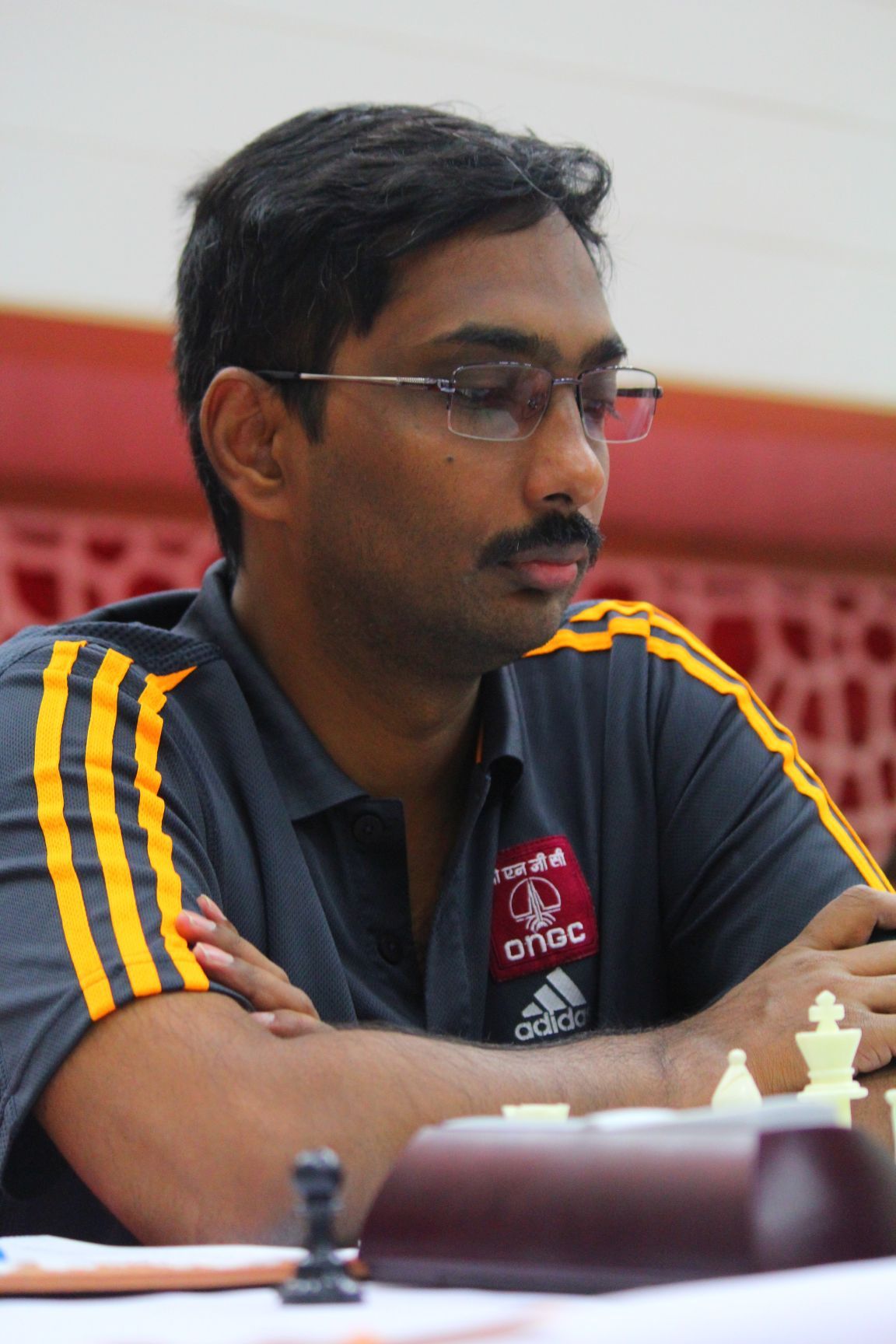Neelotpal dazzles in Skopje!
What do you do when the opponent that you are going to face in the next round is rated 150 points above you and has written an entire book on the Sicilian Richter Rauzer. While some players will shy away from the challenge, players like Neelotpal Das will confidently take him into the same opening and beat him there! The 34-year-old grandmaster from Kolkata was the hero of India at the Karpos Open 2016 where he scored 7.0/9 finishing joint second. We have a short interview with him and Neelotpal has specially sent us an annotated game!
A Historical backdrop
Neelotpal Das was born in 1982. He became an International Master in 1999 at the age of 17 years. Back in those days in India, this was considered to be an excellent feat and Neelotpal was instantly recognized as one of the brightest talents in the country. He won the under-12 Nationals and went on to win the under-25 category as well. However, his jump from the IM to GM title was not swift. It took him another seven years to become a grandmaster. But the boy from Kolkata didn't give up. In 2006 he achieved his title and had a healthy rating of 2514.

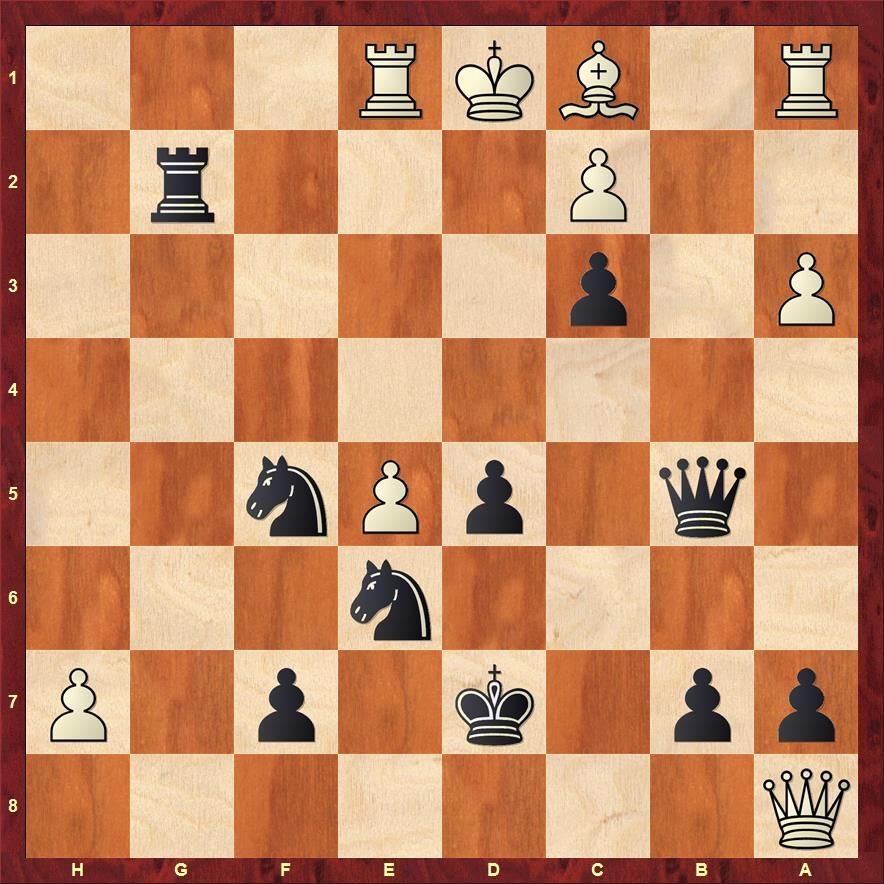
[Site "Dhaka"]
[Date "1999.02.26"]
[Round "8"]
[White "Short, Nigel D"]
[Black "Neelotpal, Das"]
[Result "0-1"]
[ECO "C18"]
[WhiteElo "2697"]
[BlackElo "2436"]
[Annotator "Psakhis,L"]
[PlyCount "52"]
[EventDate "1999.02.19"]
[EventType "tourn"]
[EventRounds "13"]
[EventCountry "BAN"]
[EventCategory "10"]
[Source "ChessBase"]
[SourceDate "1999.06.08"]
1. e4 {Kortschnoj} e6 2. d4 d5 3. Nc3 Bb4 4. e5 c5 5. a3 Bxc3+ 6. bxc3 Ne7 7.
Qg4 {In 8th round Short played against Shulman} (7. Bd3 {but without big
success}) 7... Qc7 8. Qxg7 Rg8 9. Qxh7 cxd4 10. Kd1 {Last years almost
everyone played in this position 10.Ne2, but Nigel nowdays doesn,t like follow
mainstream lines and very often choose rare variations with let say not
perfect reputations, sometimes it works, but not in this game!} dxc3 ({Another
possible continuation could be} 10... Nd7 11. Nf3 Nxe5 {for example} 12. Bf4
Qxc3 13. Nxe5 Qxa1+ 14. Bc1 Rf8 15. Bd3 Bd7 16. Re1 Nc6 17. Nxf7 Rxf7 18. Bg6
O-O-O 19. Qxf7 e5 20. Ke2 e4 21. Kf1 Qc3 $13 {with crazy position}) 11. Nf3
Nbc6 12. Ng5 ({Black hasn,t too many problems after} 12. Bf4 Qb6 $5 ({deserves
attention and} 12... Bd7 13. Ng5 O-O-O $5 14. Nxf7 Rdf8 15. Rb1 Nf5 16. Nd6+
Nxd6 17. exd6 Qd8 18. Bg3 e5 19. Qd3 d4 20. Be2 Qg5 $13 {with complicated game
1/2-1/2 Thipsay,P-Levitt,J/BCF-ch 1985/}) 13. Be3 (13. Bg3 Bd7) 13... Qb2 14.
Rc1 Bd7 15. h4 (15. Bc5 O-O-O 16. Qd3 Nf5 17. g3 Rg4 18. h4 Rc4 19. Be3 Re4 20.
Bg5 Rg8 21. Bf6 Qxa3 22. Bh3 Nb4 23. Qxe4 (23. Qf1 Na2 24. Rb1 Rb4) 23... dxe4
24. Bxf5 exf5 {0-1 Bauer-Schmidt/DDR 1988 (24)}) 15... O-O-O $1 16. Bd3 $1 (16.
Qxf7 Rdf8 17. Qh7 Nf5 $1) (16. Bg5 Qxa3) 16... Nf5 $1 (16... Rxg2 17. Ke2 $1
$13) 17. Bxf5 (17. Bg5 $1 Rh8 $1) 17... exf5 {and black chances are higher,
for example} 18. Qxf7 Rgf8 $1 (18... Rdf8 19. Qxd5 $1) (18... d4 19. Bg5 d3 20.
Qb3) 19. Qg6 (19. Qg7 d4 {/\ d3-/+}) 19... d4 20. Bg5 d3 $1 21. cxd3 (21. Bxd8
d2 $1 $19) 21... Ne7 $1 22. Qh6 (22. Bxe7 Ba4+) 22... Bb5 $1 {/\ 23... Rd3 24.
Ke1 Rd1} 23. Bd2 Kb8 $1 24. Rxc3 Nd5 $1 25. Rc1 Qb3+ {0-1 Steil,J-Farago,I/
Budapest 1986/} (25... Qb3+ 26. Ke1 Qxd3)) 12... Nd8 {N/ New and interesting
move, but according to theory black is ok and after 'N!?' Kortschnoj.
Kortschnoj: 'Up to now 12...Rf8 or 12...Qe5 were considered obligatory for
black.'} (12... Nxe5 13. f4 Rxg5 14. fxg5 N5g6 (14... N5g6 $5 15. h4 e5 $1 16.
h5 Nf8 17. Qg7 Bg4+ 18. Ke1 O-O-O 19. Qxf7 Bf5 (19... Ne6 20. Be2 Bf5 21. Rf1
Rf8 22. Qxe6+ Bxe6 23. Rxf8+ Kd7 $132 {1/2-1/2 Krstev,K-Lehikoinen,P/corr 1985
(36)}) 20. Rh4 Ne6 21. g4 e4 22. Kf2 Rf8 23. Qxf8+ Nxf8 24. gxf5 Nxf5 25. Rf4
Qe5 {0-1 Stein,B-Farago,I/Lugano op 1985 (31)})) ({or} 12... Qxe5 13. Qxf7+ Kd7
14. Bf4 Qd4+ 15. Ke1 e5 16. Be3 Qg4 17. Be2 Qf5 18. g4 Qxc2 19. Nh7 Kc7 20. Nf6
Rd8 21. Bf3 d4 22. Bxc6 dxe3 23. Qxe7+ Kxc6 24. Qxd8 Qxf2+ {0-1 Busquets,
L-Ivanov,I/Irvine op 1997 (24), funny what Nigel preper in this lines or it
was just bluff from his side?}) 13. f4 Bd7 14. h4 {White knight and queen are
very active , but it's very difficult for them to fulfill development and
Nigel decided to to push h-pawn - his main trump card.} ({Or} 14. Be3 {
Kortschnoj} Rxg5 15. fxg5 Qxe5 {with compensation.}) 14... Qc5 15. h5 Bb5 16.
Bxb5+ (16. Bd3 $5) 16... Qxb5 17. h6 {From the first look you can get illusion,
that white is winning already but it is not truth.} (17. Qd3 {Kortschnoj would
be more circumspect, but here white still has not had any suspicion on
approacing dangers.}) 17... Rg6 $1 18. f5 $2 (18. Qh8+ $5 Kd7 19. h7 (19. Qf8 {
Kortschnoj} Ndc6 $1 20. Qxa8 Rxh6 21. Re1 Rh2 {and black develops a
devastating attack.}) 19... Rh6 $1 20. Rg1 (20. Re1 Rh2 (20... Rh2 21. Be3 (21.
Nf3 Rxg2 22. Nd4 Ndc6 $1 23. Qg8 Nxg8 24. hxg8=Q Raxg8 25. Nxb5 d4 {black is
winning.}) 21... Nf5 22. Qf8 Qf1)) 20... Qc4 $40) 18... Nxf5 $1 19. Qh8+ (19.
Qxg6 fxg6 20. h7 Nf7 21. h8=Q+ Nxh8 22. Rxh8+ Kd7 $19) 19... Kd7 20. h7 Rh6 $1
{Kortschnoj: 'Winning move!'} 21. Re1 (21. Nh3 Rh4 22. Qg8 Nd4 23. Re1 Qa4 24.
Re2 Nxe2 $19) 21... Rh2 $19 22. Nxe6 (22. Qg8 Rxg2) 22... Nxe6 23. Qxa8 Rxg2 $1
{Nice move,} 24. Ra2 ({white can,t play now} 24. h8=Q {because of} Qd3+ $3 25.
cxd3 c2#) 24... Ne3+ $1 {Final blow!} 25. Bxe3 Qb1+ 26. Bc1 Rd2# {Terrible
defeat recent challenger for chess crown!} 0-1
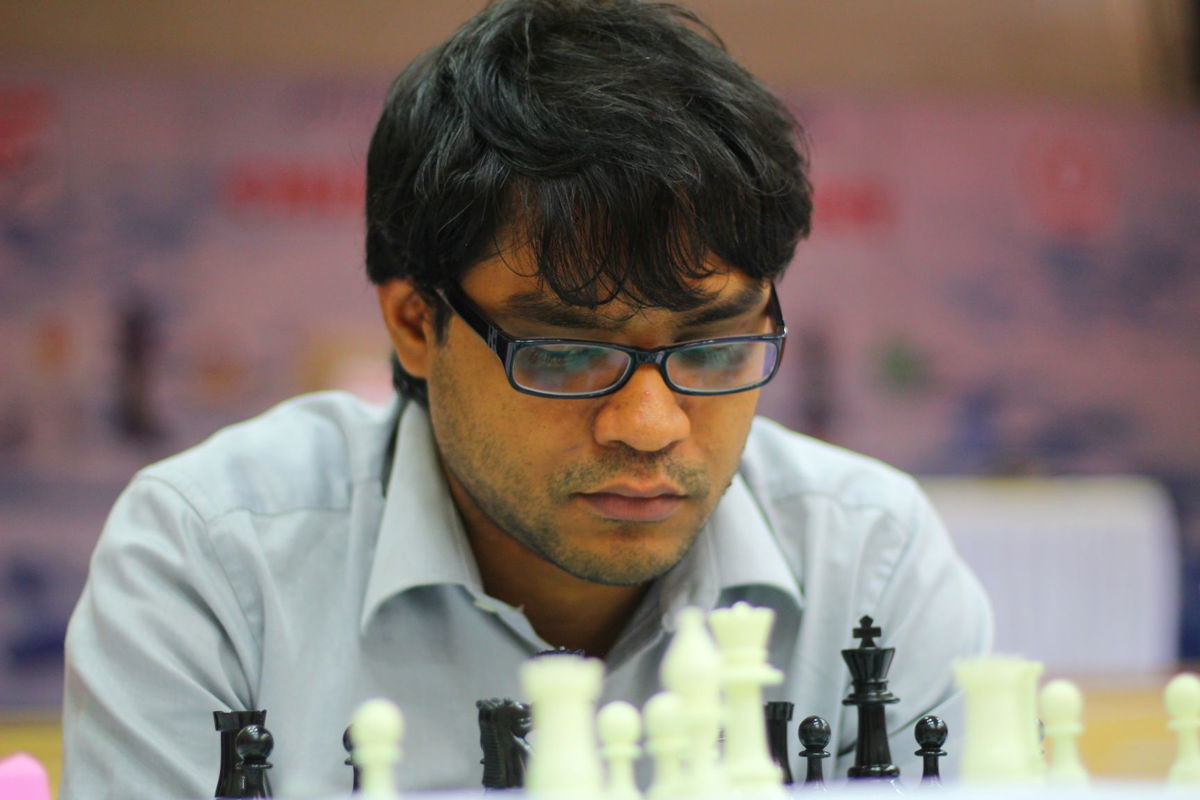
Karpos Open 2016


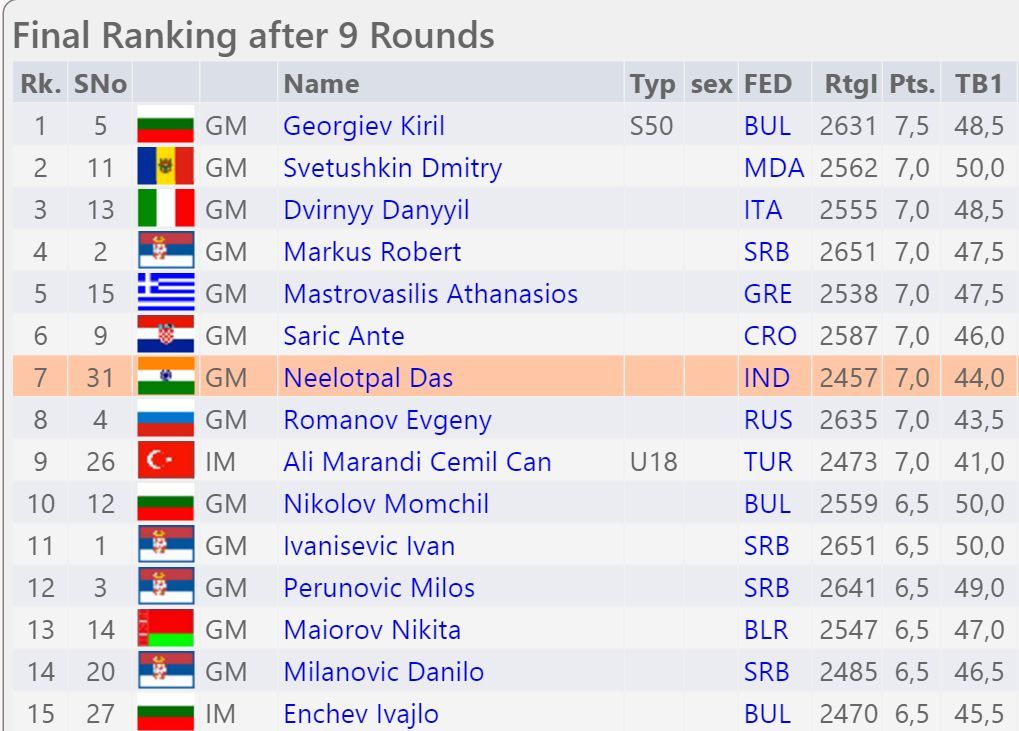
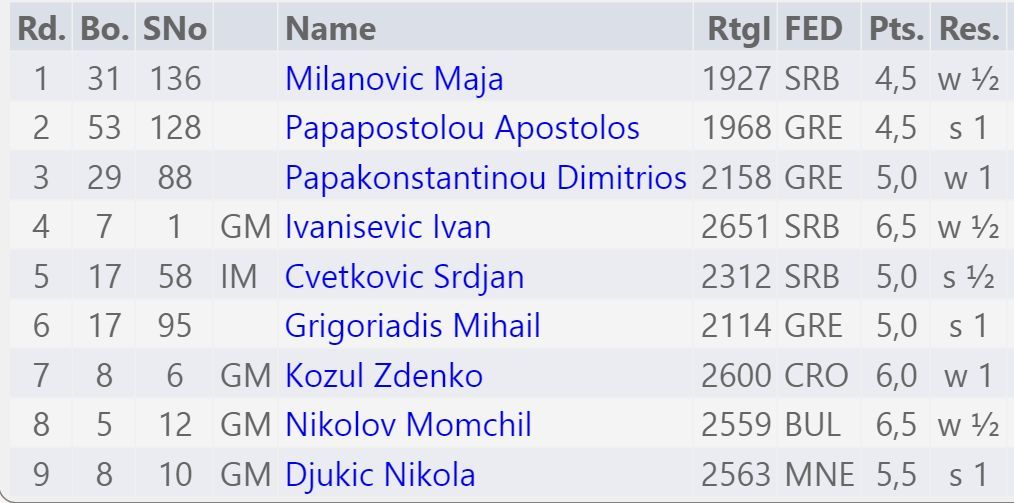
Interview with Neelotpal Das
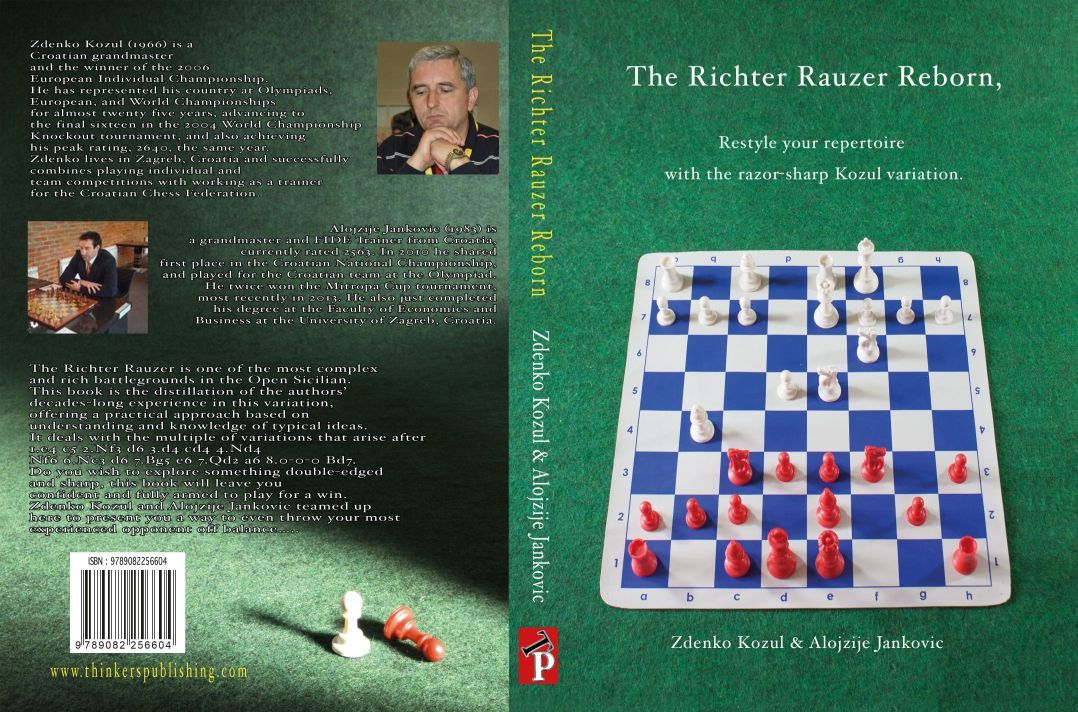
[Site "Skopje, MKD"]
[Date "2016.04.05"]
[Round "7.8"]
[White "Neelotpal, Das"]
[Black "Kozul, Zdenko"]
[Result "1-0"]
[ECO "B67"]
[WhiteElo "2457"]
[BlackElo "2600"]
[Annotator "Das,Neelotpal"]
[PlyCount "75"]
[EventDate "2016.04.01"]
[EventRounds "9"]
[EventCountry "MKD"]
{Before the game my friend Kidambi told that Kozul has written a book on
Sicilian Richter Rauzer the line which was very likely to come in my game. I
briefly had a look at the book (The Richter Rauzer Reborn - Kozul Variation)
and it was too difficult to go through the deep analysis and explanation given
in the book in a short time. Although I had some doubts whether to enter a
variation where my opponent has vast experience, nevertheless I took the
challenge and relied on my understanding. Luckily for me it worked.} 1. e4 c5
2. Nf3 d6 3. d4 cxd4 4. Nxd4 Nf6 5. Nc3 Nc6 6. Bg5 e6 7. Qd2 a6 8. O-O-O Bd7 9.
f3 {with 9.f3 white protects the e4 pawn and tries to conduct the game in
similar fashion like in the English attack (for instance g4,h4,g5 )} (9. f4 {
of course another important alternative and probably the main line is 9.f4
which was recently played in the Candidate final round between Karjakin -
Caruana Moscow 2016}) 9... Be7 10. Kb1 O-O 11. h4 (11. g4 {11.g4 is incorrect
due to} Nxd4 12. Qxd4 Nxe4) 11... b5 12. g4 Rc8 ({it was possible to play}
12... Qc7 13. Be3 Rfc8 {and keep the other rook for b file}) (12... Ne5 {
after 12...Ne5 white need not bring back bishop to e3} 13. Bxf6 Bxf6 14. g5 Be7
(14... b4 15. Nce2 Be7 16. Ng3) 15. f4 {and White seems to have good attacking
prospects}) (12... b4 13. Nxc6 Bxc6 14. Ne2 a5 15. Nd4) 13. Be3 Ne5 14. Bd3 {
White completes development and now ready for full fledged attack on the kside}
(14. Qg2 Rxc3 {a standard sacrifice in sicilian} (14... b4 15. Nce2 Nc4 16. Bc1
d5 {is also possible}) 15. bxc3 Qc7 {and during the game I couldn't evaluate
this position so I didn't allow black to take on c3} 16. g5 Nh5) (14. a3 {
14.a3 was also a worthy alternative just to slow down black's attack . But
somehow during the game I was more keen on attacking on the kside without
commiting any weakening move on the Qside} d5 (14... Nc4 15. Bxc4 bxc4 16. h5
Rb8 17. g5 Ne8 18. Ka1 Qb6 19. Rb1) 15. g5 Nh5 16. exd5) 14... b4 15. Nce2 d5 (
15... a5 {for 15...a5 I had planned to play Ng3 to prevent Nh5 by black} 16.
Ng3 Nxd3 17. cxd3 d5 18. g5 Ne8 {the position remains unclear but I would
prefer to be white as I feel its comparatively easier to conduct a kside attack
}) 16. g5 Nh5 17. exd5 exd5 18. Nf4 Nxf4 19. Bxf4 Nxd3 $6 {after 19...Nd3
Black somewhat lands into a very passive position. with a knight at d4 White
dominates the position with good prospects of kside attack} (19... Nc4 20. Qg2
Qb6 21. Nf5 Bxf5 22. Bxf5 Rcd8 23. h5 a5 {White might be slightly better due
to bishop pair and isolated d5 pawn but black is not without chances either.}
24. Rhe1 Bc5) 20. Qxd3 a5 21. Nf5 Bxf5 (21... Be6 22. Be5) 22. Qxf5 d4 23. Be5
Rc5 24. Qe4 f6 $2 {after this move black's position collapses} (24... Rd5 {
lesser evil was to accept a pawn down position} 25. Rxd4 Rxd4 26. Bxd4) 25.
Bxd4 Rd5 26. Kc1 $1 $18 {W just defends the rook on d1 and all of a sudden it
generates numerous tactical threats} fxg5 27. Bxg7 $138 (27. Bf6 Rxd1+ 28. Rxd1
Bxf6 29. Rxd8 Rxd8 {this should also be winning for white but was not very
clear to me}) 27... Rff5 28. Bh6 Qd6 29. Rxd5 Rxd5 30. Bxg5 Re5 31. Qa8+ Kf7
32. Qh8 {this is the most precise move to end the game} Bf8 33. Qxh7+ Bg7 34.
Rd1 (34. f4 {was strongest, of course suggested by engine! as 34...Re2 is just
not possible in view of 35.Qh5} Re2 35. Qh5+ {and W picks up the rook}) 34...
Qe6 35. Qh5+ Kg8 36. Qg4 Qxa2 $4 {this loses immediately but 36...Qg4 is
hopeless anyway with 3 pawns down in the endgame} (36... Qxg4 37. fxg4 Re4 38.
Rg1 Bd4 39. Rg2 a4 40. Bd2 $18) 37. Rd8+ Bf8 38. Bf4+ 1-0
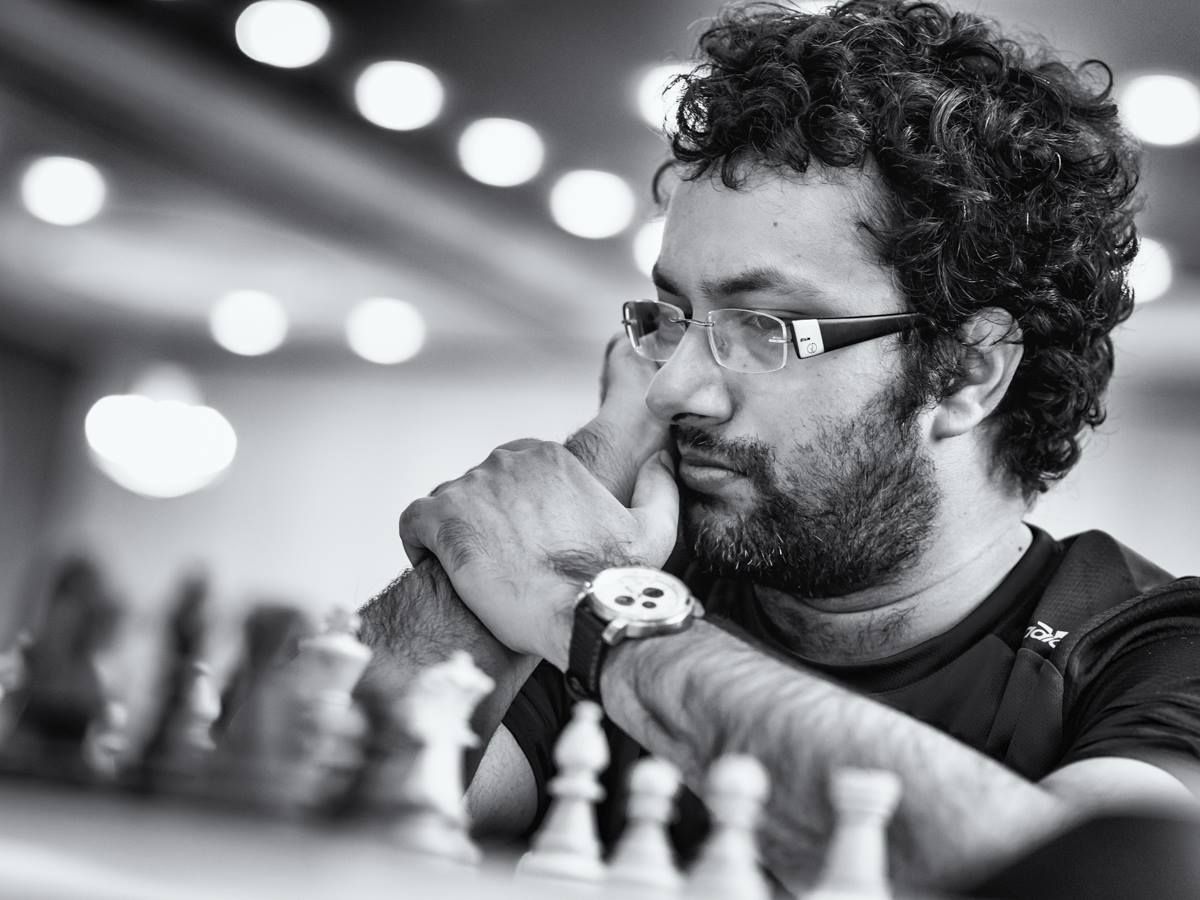
Sundararajan Kidambi scored 6.0/9 and finished 25th (Picture by Alina l'Ami)
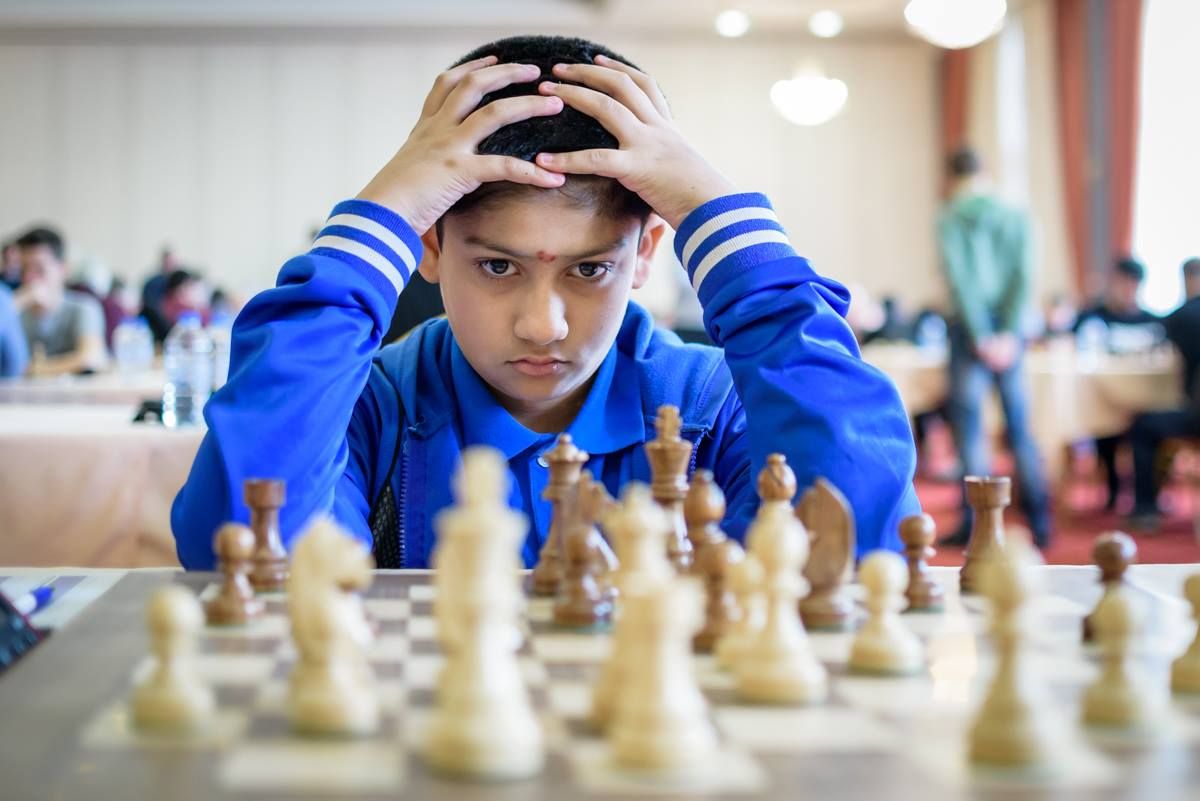
12-year-old Dhanush Bharadwaj played some good chess to score 5.5/9 and gain 30 Elo points (picture by Alina l'Ami)
